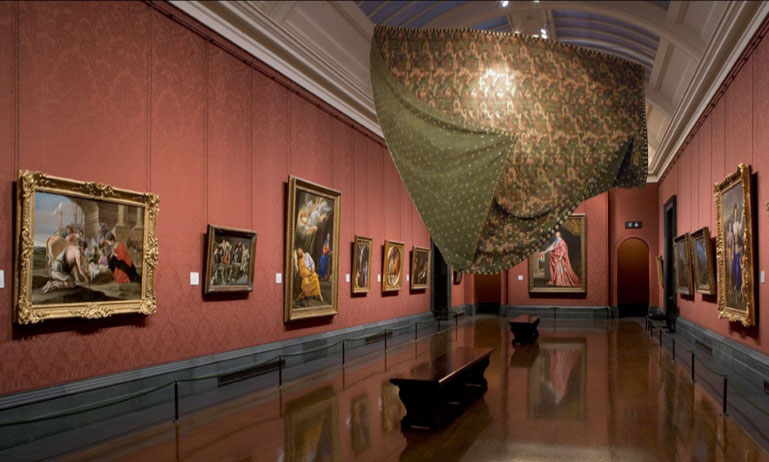Imrana Tanveer
Born in 1985 in Sialkot (Pakistan)
Lives and works in Karachi (Pakistan)
Imrana Tanveer is a Karachi-based artist whose work incorporates weaving and textiles, appropriating iconographical images from art and culture to address socio-political issues, both locally and globally. Her multi-medial practice synthesises imagination and reality, extricating a complex visual dialogue which simultaneously deconstructs our collective realities and reconstructs an imagined reality, scrutinising and transmuting the world in which we live. Tanveer holds degrees from the National College of Arts, Lahore, and Textile Institute of Pakistan, Karachi. Having won the International Emerging Artist Award in 2016 in Brussels, Belgium, she is currently one of thirty finalists for the Sovereign Asian Art Prize, and her work has been exhibited throughout the world. Islamic Art Magazine featured Tanveer’s first solo show in its top ten solo and retrospective exhibitions of 2013, and her work is part of highly-acclaimed collections such as that of the British High Commission, Islamabad; the Ierimonti Gallery, USA; and the AAN Collection, Pakistan.
In her work for the Karachi Biennale 2017, Construction/Deconstruction: The Work is Present, Tanveer has reprocessed one of her previous installations, Post Betrayal (2012), in which she applied her textile practice to create a camouflage parachute, using digital mapping to place the work in a series of international galleries and museums, primarily in the United States. Thus, her work wittily comments on the primary aim of many peripheral art practitioners; to have their work exhibited in the Western centers of power in the global art world, by placing one of her previous works in a litany of Western institutions. The work’s satirical commentary on the implications of the North-South axis of power in contemporary art is strengthened by the underlying exploration of the definition of art in the digital age, wherein interactivity and virtual reproduction are a reality, calling for, in the words of Tanveer, “a new conceptual understanding of different techniques, production and display methodologies.”

Construction/Deconstruction: The Work is Present, 2017.
Video, 2 min. on loop.
Courtesy the artist

